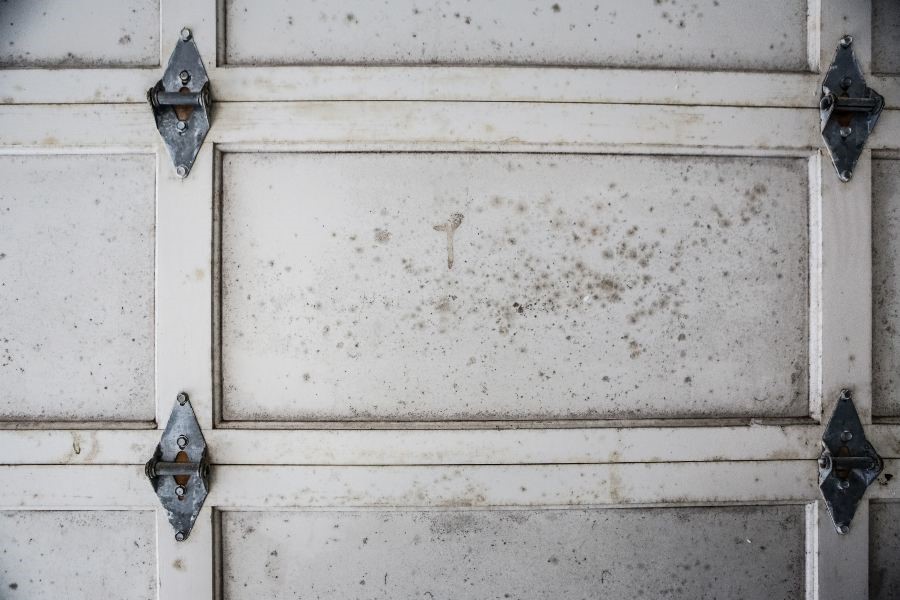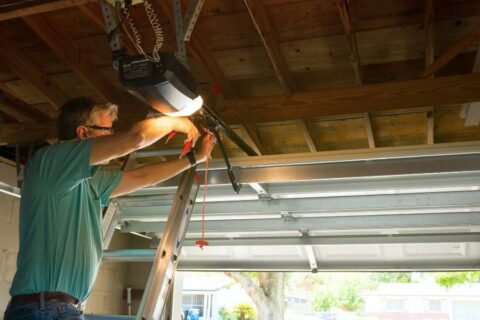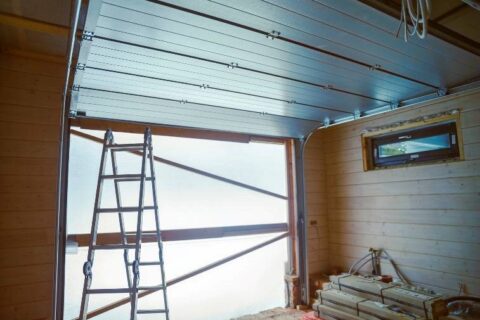How to Prevent Garage Moisture and Mold Issues
Garages are prone to high humidity, leaks, and condensation, making them a popular breeding ground for mold. Left unchecked, mold can damage your walls, ruin your belongings, and even cause health problems. Fortunately, you can prevent garage moisture and stop mold before it starts.

The Trouble with Mold
Mold can turn your garage into a damp, musty mess. Once it takes hold, it can spread fast and become a serious problem.
The first issue is structural damage. Mold feeds on organic materials like wood beams, insulation, and drywall, weakening them over time. It can also infiltrate cardboard boxes holding seasonal decorations, clothing, and keepsakes, eating away at fabrics and leaving stains and odors behind.
Mold spores also cause allergic reactions, respiratory issues, and worsened asthma symptoms in sensitive populations. People with mold allergies may experience coughing, sneezing, congestion, headaches, or skin irritation.
Where Does Mold Come From?
Mold needs moisture to grow. Here are some common ways for water to enter your garage:
- Leaky roof: A small garage roof leak may go unnoticed for months. Even a slow drip may provide enough moisture for mold to grow.
- Unfinished walls and exposed insulation: Bare drywall and insulation absorb moisture from the air. If these materials aren’t sealed or protected, they may become breeding grounds for mold.
- High humidity levels: With no climate control system or ventilation, garages are prone to high humidity. This leads to condensation on floors, walls, and ceilings.
- Poor weatherstripping: If the garage door, windows, and other entrances aren’t properly sealed, rain and humidity can sneak inside. Moisture builds up over time, leading to mold along doors, window frames, and baseboards.
- Damp items: The family’s wet umbrellas, a pile of damp towels, or a soaked doormat might not seem like a big deal, but these items introduce moisture. If they don’t dry quickly, they become mold magnets.
- Cardboard boxes: Cardboard absorbs moisture like a sponge, making it one of mold’s favorite materials. Stacking boxes on the floor or against the wall encourages hidden mold growth.
Is Mold Lurking in Your Garage?
The sooner you catch mold growth, the easier it is to contain. Here’s how to tell if you have a mold problem in your garage:
- Musty odors: A persistent, damp, earthy smell is often the first sign of mold.
- Visible growth: Mold may grow in black, green, or white patches on the walls, ceiling, or stored items. It might look fuzzy, slimy, or powdery, depending on the type.
- Discoloration: Yellowish-brown stains and dark streaks on your walls or ceiling indicate moisture intrusion—and mold isn’t far behind.
- Warped or rotting wood: If wood shelves, beams, or trim feel soft or have started warping, excess moisture and mold are the most likely cause.
- Allergic reactions: If you or any family members feel congested, sneezy, or itchy when you enter the garage, mold spores might be in the air.
Tips for Removing Existing Mold
Once you spot mold growth, it’s important to act fast. Here’s how to get rid of it safely and effectively:
- Safety first: Put on gloves, goggles, and an N95 mask before you begin.
- Ventilate the area: Open the garage door for ventilation, but avoid using fans, which can spread spores to other areas.
- Use the right cleaner: A mix of water and bleach works well for non-porous surfaces like metal and plastic. However, avoid using bleach on porous surfaces like wood, drywall, and concrete, as it only kills surface mold and may degrade the porous material.
- Scrub thoroughly: Remove mold from affected surfaces using a stiff brush. If the mold has penetrated porous materials, you may need to replace them.
- Dry everything completely: After cleaning, speed up drying with fans or a dehumidifier to prevent regrowth.
How to Prevent Mold in the Garage
Once you remove existing mold, you want to make sure it never returns. Follow these garage moisture control tips to keep your space dry:
- Improve ventilation: Garages tend to be stuffy, so install vents or an exhaust fan to keep the air moving. Also, consider using a dehumidifier for garage humidity control.
- Seal cracks and gaps: Check around garage doors, windows, and walls for gaps where rainwater could enter. Use weatherstripping and caulk to seal them up.
- Fix leaks immediately: Never ignore roof leaks, dripping pipes, or pooling water. The longer moisture sits, the more likely mold becomes.
- Store items properly: Keep cardboard boxes off the floor and away from walls. Upgrade to plastic storage bins with tight lids if possible.
- Insulate the garage: Adding insulation helps regulate the temperature and minimizes condensation on cold surfaces.
- Clean and inspect regularly: Mold thrives in undisturbed spaces, so sweep out the corners, look behind boxes, and check for leaks and condensation monthly.
A Better Garage Starts Here
Better Built Garages is your source for durable, high-quality garages in the Chicago area. Our family-owned business takes pride in providing expert craftsmanship and unmatched customer service. Whether you’re looking to add a detached garage or upgrade your existing storage space, we’re here to help. Contact us today for a free estimate—you’ll fall in love with a Better Built garage.


